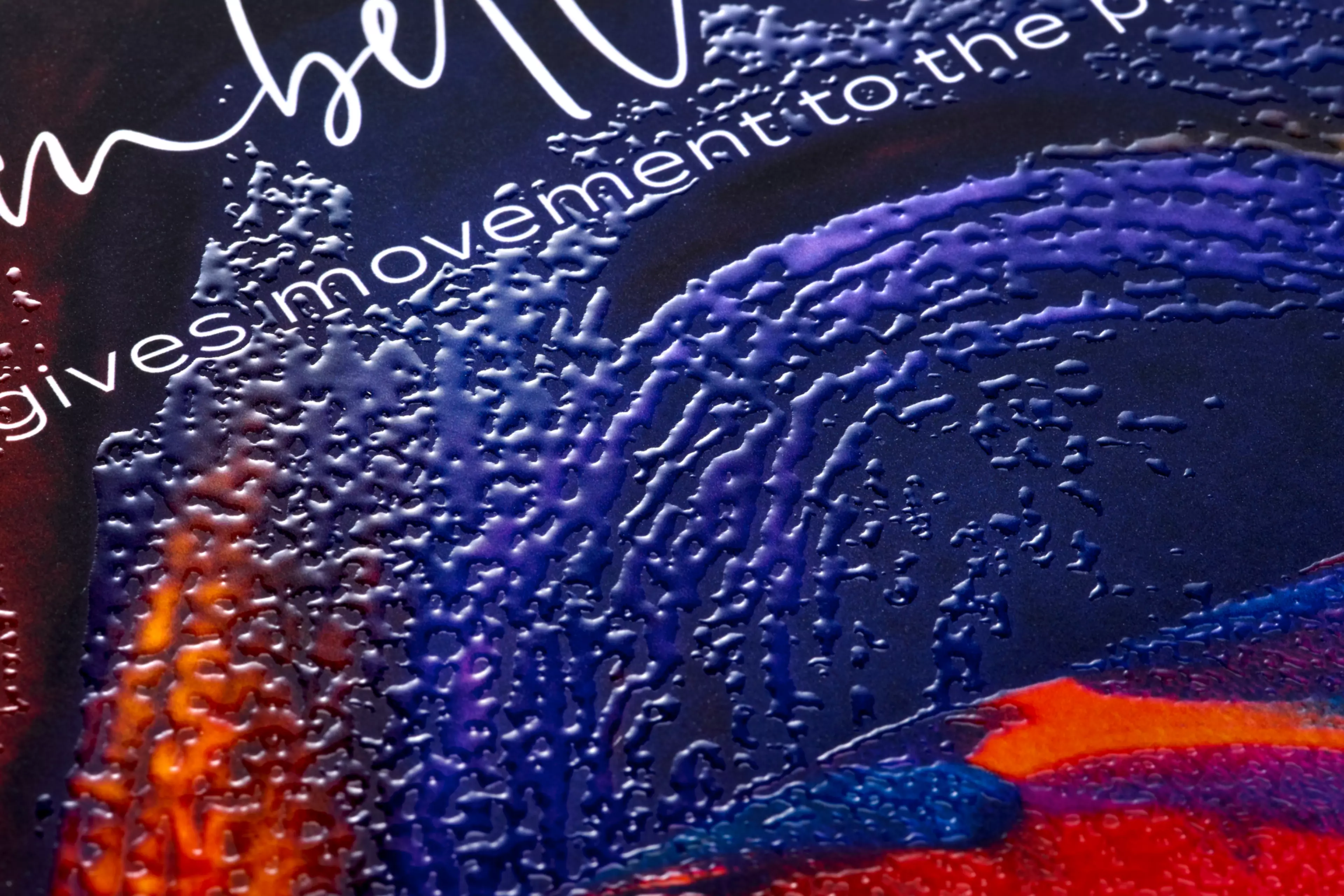"Green" or sustainable printing is clearly in vogue. A high proportion of different natural materials can be incorporated into the printing paper. There are also materials such as metals, plastics, textiles, wood, and synthetic paper, some of which have spectacular properties. It is worthwhile for print shops to be aware of the latest developments in order to advise their customers.
Digital printing is becoming increasingly popular. One of its major strengths lies in the efficient and cost-effective printing of short runs and print-on-demand. High-quality prints with variable data and images can be produced on various surfaces. Two important trends are sustainable printing on organic materials and automated printing on customized, high-quality substrates that allow customers to differentiate themselves.
Natural papers - all the rage

Completely tree-free grades made from various fibres or paper with a high proportion of grass fibres, hemp, cotton fibres, bamboo, bagasse, the fibrous remains of the sugar cane plant after sugar production, and other natural waste such as from coffee production - countless natural materials in addition to paper - can be printed on or incorporated into special options. The interest in sustainable natural materials is huge and continues to grow. As an example, in some cases high proportions of natural materials, or, for example, 15% organic waste can be included in paper production. Depending on the location and customer base, it is important to develop and communicate a sustainable and credible concept. For example, eco-certified grass grades from the local area: it can be provided with short delivery routes and later disposed of in the same way.
A natural look is in demand
A trend towards more uncoated papers is under way for commercial print products. These so-called uncoated choices with an open surface have a rougher and more natural look. They are a further step towards even more sustainable, recyclable, brochures, business cards and many other business print products. The properties and effects that can be achieved using the latest production methods such as digital printing on these uncoated options are surprising and can inspire your customers.
Fancy something a little more premium?
What is print embellishment and how can my company benefit from it?
Print can be more than just colour on paper, a product or a label. Embellishment gives the printed product a tactile feel. When customers "feel" the highlighted elements on a package, they are more likely to touch the product and even want to buy it in the end. Finishes can be added inline on selected digital production systems and offline using specialised embellishment solutions.
Ready to use without lamination
Special substrates with special surfaces are in vogue. For example, there are uncoated fine papers that are resistant to fingerprints, oils, water or varnish thanks to a coating or treatment, meaning they hardly show any signs of wear. One common application is menu cards for restaurants, which are ready for use immediately after printing. Another option is direct printing on plastics. Substrates made from polypropylene - also known as synthetic paper - offer easy printability, just like paper. Their advantage: they are tear-resistant, waterproof and ideal for outdoor application as they can withstand wind and weather. And all this without additional lamination.
Print products with completely new properties
Products that enable new customer experiences and combine them with online content are also in demand. For example, there is packaging or other printed products with interactive QR codes or embedded NFC tags. Customers can scan the label of a bottle or other packaging - using a Smartphone - to directly experience the story behind a product. For example, they can see details of the winery through a video or use augmented reality (AR) or virtual reality (AR) technology.
Tips for substrate advice
The selection of a substrate for UV inkjet printing depends on the individual requirements. It is therefore important to clarify the following factors in advance:
- The desired result: what do you want to achieve with the print? Will photos, graphics or text be printed?
- The budget: how much money can be spent on the substrate? How important are criteria such as sustainability, effective staging or individuality?
- The technical possibilities: which printing machines are available?
- Durability: how long should the printed products last? You should consider the substrate selection strategically.
A wide range of substrates
Many substrates are suitable for UV inkjet printing. This is in line with the increasing demand for ever more unique, durable, print products.
In addition to paper, canvas and wood, plastics and papers with special coatings are popular substrates. In order to maximise efficiencies in a print shop, it is important to strike a balance between low stock levels and production without waiting times.
Compatible print media for Konica Minolta systems
This Online Media Guide provides a quick overview of tested substrates.
Detailed information and test results are available for easy download.




